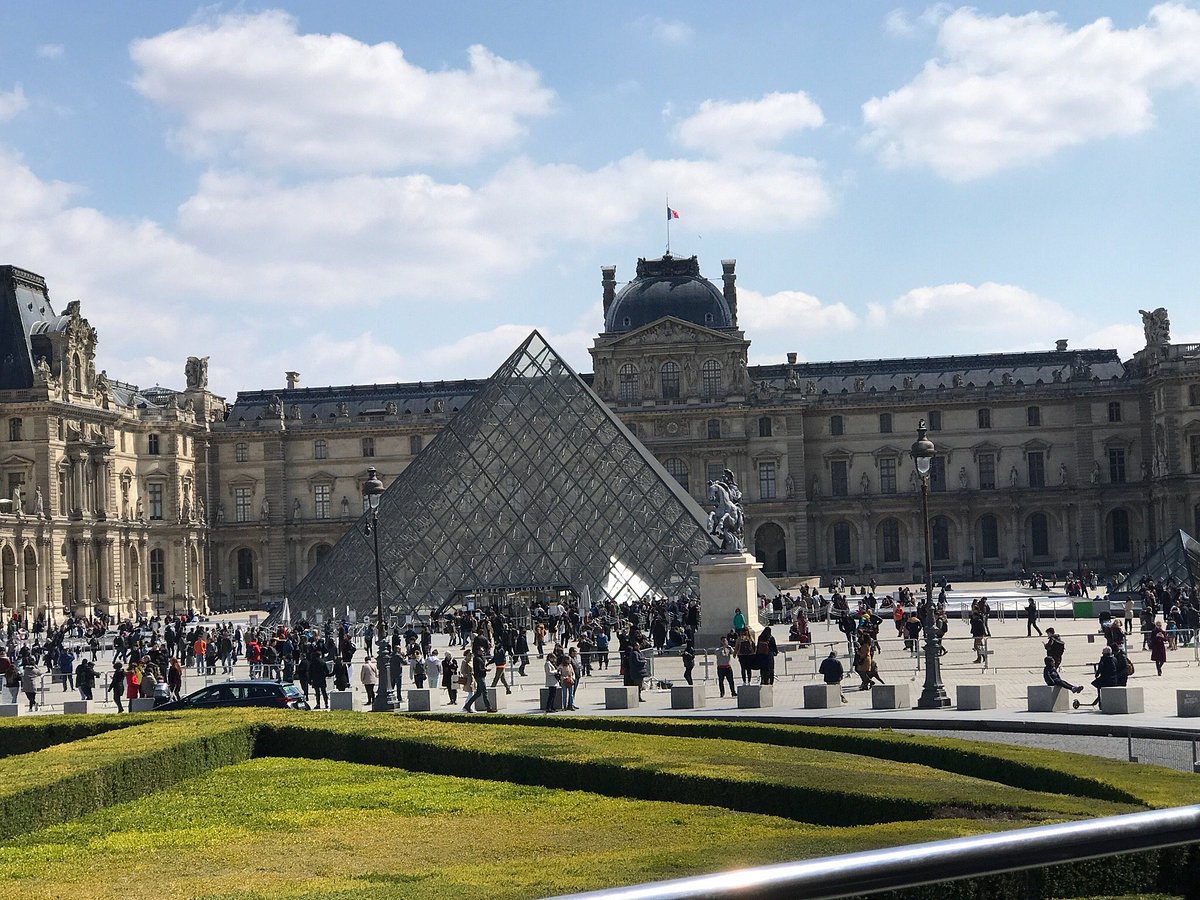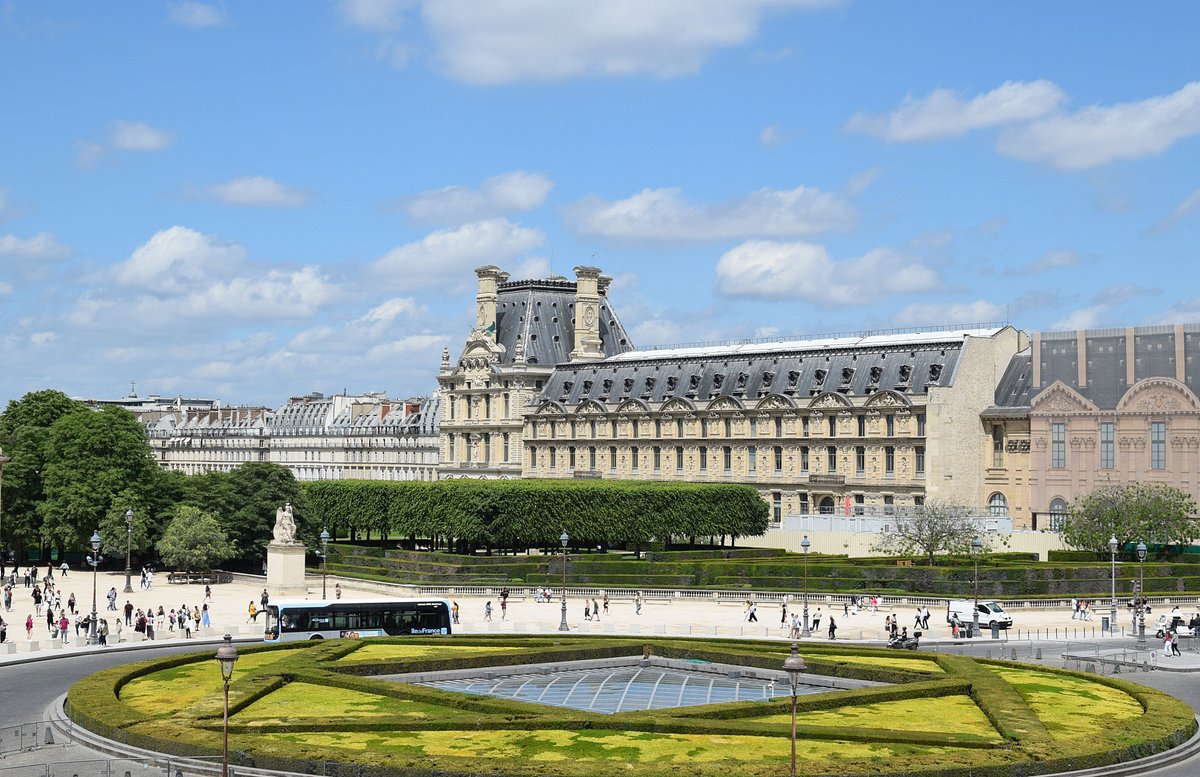Description
Reveal the hidden gems of Paris on their Place du Carrousel tour. Immerse yourself in the rich history of the city as you explore the iconic Louvre Museum and its picturesque surroundings. Stroll through the lush Tuileries Garden and marvel at the stunning architecture of the Place Vendôme. Indulge in some of the best local cuisine as you stop by charming cafes and restaurants along the way. their expert guides will take you on a journey through time, revealing the secrets and stories behind each landmark. Book your tour now and experience the magic of Paris like never before!
Photo Gallery
[su_content_slider style="dark" autoplay="0"] [su_content_slide] [/su_content_slide]
[su_content_slide]
[/su_content_slide]
[su_content_slide] [/su_content_slide]
[su_content_slide]
[/su_content_slide]
[su_content_slide] [/su_content_slide]
[/su_content_slider]
[/su_content_slide]
[/su_content_slider]
Top-Rated Tours in Paris
Table of Contents
Place du Carrousel is a pivotal square in Paris, France, known for its rich historical tapestry and significant architectural landmarks. Situated in the 1st arrondissement, it lies at the axis of the renowned Louvre Palace, where the western terminus of the Tuileries Palace once stood.
This public square has been a silent witness to the ever-evolving cultural landscape of French history. With events like the lavish carousels (equestrian parades) held by Louis XIV in the 17th century, it has long been an area of celebration and public display.
The square is dominated by the Arc de Triomphe du Carrousel, a triumphal arch erected by Napoleon to commemorate his military victories. Inspired by the Roman arches of Septimius Severus and Constantine, architects Charles Percier and Pierre-François-Léonard Fontaine designed this iconic structure with intricate reliefs and sculptures that captivate onlookers.
Sightseeing Information:
Visitors to the Place du Carrousel can admire the arch and enjoy a seamless confluence of past and present that defines the space. It provides a unique vantage point to view the juxtaposition of the Louvre’s classical architecture against the modern Parisian cityscape.
Practical Tips:
- Optimal views can be enjoyed during the day, when sunlight enhances the arch’s details.
- The area is a pedestrian zone, allowing for leisurely exploration free from traffic.
- Nearby, the Carrousel Garden offers a serene green space for relaxation within this bustling spot of historical import.
Place du Carrousel remains a must-visit location for anyone interested in the layers of Parisian culture, history, and architectural brilliance.
Historical Significance

The Place du Carrousel is a square in Paris with great historical significance, between the Louvre Museum and the Tuileries Gardens. Its name derives from the traditional horse carousels that knights trained on, culminating in Louis XIV’s lavish display of equestrian skills in the 17th century.
The square is most notably marked by the Arc de Triomphe du Carrousel, constructed by Napoleon in 1806-1808 to celebrate his military victories. This triumphal arch, while echoing the grandeur of Ancient Rome, serves as a symbol of French military strength and national pride. The intricate reliefs and sculptures adorning the monument depict various Napoleonic victories and contribute to the square’s artistic and cultural heritage.
Notable Historical Events:
- 1745: Hosted celebrations for the marriage of Louis, Dauphin of France.
- 1789: Saw the gathering of a Parisian mob that would lead to significant events in the French Revolution.
- 1806-1808: Construction of the Arc de Triomphe du Carrousel.
- 1993: Nearby Carrousel du Louvre opened, contributing to the site’s modern day appeal.
A pivotal moment in the site’s history was the mob’s march on Versailles on October 5, 1789, dramatically altering the French monarchy’s future. The tumultuous events of the Revolution still echo through the square, underpinning its resonance with French history.
The arc’s central statue, once a symbol of Napoleon’s reign, has been replaced, reflecting the complex layers of France’s past. Visitors today can appreciate the arc’s historical context while also enjoying its proximity to one of the nation’s art and culture powerhouses, the Louvre Museum. Although once a royal stage, it now serves as a point of convergence for tourists and history enthusiasts worldwide.
Architectural Highlights
The Place du Carrousel is a historic square in Paris, home to an impressive architectural gem: the Arc de Triomphe du Carrousel. This triumphal arch is not to be confused with its larger cousin, the Arc de Triomphe de l’Étoile, as it stands near the Louvre Museum’s Cour Napoleon.
Erected between 1806 and 1808, the Arc de Triomphe du Carrousel showcases Neoclassical architecture in the Corinthian order. It was built to celebrate Napoleon’s military victories of the early 19th century. The structure’s design was influenced by the Arch of Constantine in Rome, but it displays its own unique characteristics.
- Sculptures and Reliefs: Visitors can admire various reliefs on the arch, depicting military victories, while the top is adorned with sculptures representing Napoleon’s troops. Originally, the arch bore the famous horses of Saint Mark from Venice, which have since been returned and replaced with replicas.
- Historical Context: Commissioned by Napoleon after the victory over the Third Coalition at the Battle of Austerlitz, the arch was designed to anchor a line from the central courtyard of the Louvre to the nearby Tuileries Gardens.
- Statues: Atop the arch, a quadriga sculpted by François Joseph Bosio features an allegory of the Restoration of the Bourbons following Napoleon’s downfall.
The Place du Carrousel is not just an architectural site, but a piece of living history, providing insights into France’s complex past. Whether viewed as a historical monument or a work of art, the square and its notable arch offer an enduring narrative of Parisian and French grandeur.
The Arc De Triomphe Du Carrousel
The Arc de Triomphe du Carrousel stands as a proud testament to France’s military achievements under Napoleon. Situated in the Place du Carrousel, this Neoclassical triumphal arch is dwarfed by its larger counterpart on the Champs-Elysees yet shines with its own historical and aesthetic significance.
Commissioned by Napoleon after his victories in the Wars of the Third and Fourth Coalitions, its construction spanned from 1806 to 1808. The arch is richly adorned with sculptures of soldiers and reliefs depicting military conquests, encapsulating the essence of the Napoleonic era.
Dimensions and Design:
- Style: Corinthian order
- Height: 19 meters (approx.)
Distinctive Features:
- A set of bronze horses on the arch’s summit, which are replicas of those taken from Saint Mark’s Cathedral in Venice (now replaced in Venice by originals).
- Inscriptions and bas-reliefs signaled triumph in the battles of Austerlitz and Jena.
The arch’s proximity to the Louvre Museum enhances the square’s cultural experience, as visitors often frequent both landmarks. While not as grandiose as the Arc de Triomphe at the end of the Champs-Elysees, the Arc de Triomphe du Carrousel offers an intimate glimpse into the architectural finesse of early 19th-century France.
Visitor Tips:
- The site is accessible via the Palais Royal – Musée du Louvre metro station.
- Ideal for a combined visit with the Louvre Museum.
- Photography is recommended early in the morning to avoid crowds.
Nearby Attractions
Louvre Museum: Adjacent to Place du Carrousel, the Louvre Museum is a historic monument and the world’s largest art museum. It houses thousands of works, including the famed Mona Lisa. Visitors can enter through the glass pyramid in the Cour Napoléon.
Tuileries Garden: Stretching from Place du Carrousel to Place de la Concorde, the Tuileries Garden offers a serene escape. It was once part of the Tuileries Palace and today features statues, fountains, and two ponds, perfect for leisurely strolls or picnics.
Seine River: A short walk leads to the banks of the Seine River. Sightseeing cruises offer unique views of Parisian landmarks, including the Eiffel Tower and Notre-Dame.
Palais Royal: North of Place du Carrousel, Palais Royal features a tranquil garden with contemporary art installations like Les Deux Plateaux. The surrounding galleries offer shopping and dining options.
- Eiffel Tower: Visible from various points along the Seine, this iconic structure is an essential part of the Parisian skyline.
- Champs-Elysees and Grand Palais: To the west, the Champs-Elysees stretches from Place de la Concorde to the Arc de Triomphe. The grand avenue is lined with shops, cafés, and theaters. Nearby, the Grand Palais hosts major exhibitions and events.
| Tips for Tourists |
|---|
| Purchase skip-the-line tickets to popular sites. |
| Enjoy the gardens for free all year round. |
| Opt for a Seine cruise at sunset for memorable views. |
Visitor Tips
Getting There: Tourists can take multiple routes to arrive at Place du Carrousel. The area is accessible via the 99 Rue de Rivoli entrance. An escalator leads down to the Galerie du Carrousel. Additionally, steps on either side of the Arc de Triomphe du Carrousel offer another underground access point.
Timings and Tickets: Before visiting, individuals should check the latest timings and ticket prices. This is especially important for entering the Louvre Museum, which borders the Place du Carrousel. Purchasing tickets in advance is recommended to minimize queue times.
- Experience: Visitors get a chance to witness the blend of historical grandeur and luxury. The neighborhood ensures a rich experience with its close proximity to iconic Parisian locations, including the Tuileries Garden.
Map and Information: It’s prudent to possess a map or to consult the informational signs dotted around. This helps in navigating both the open spaces and the underground areas like Galerie du Carrousel.
Queues: To avoid long queues at the Louvre, tourists are advised to arrive early in the morning or book a skip-the-line ticket. The crowds are thinner, and the experience is more personal.
- Transport: Public transport is convenient, with several Metro stations nearby. For a scenic approach, consider a leisurely walk along the Seine.
Local Tips: Be mindful of the varying weather; carrying an umbrella or a sunhat is advisable. Comfortable walking shoes are a must for explorers ready to tread the cobbled streets and explore all the nearby historical treasures.
How To Get There
Visitors aiming to revel in the splendor of Place du Carrousel can easily access this historic square in Paris through several modes of public transport.
By Metro: Place du Carrousel is conveniently located near the Louvre Museum, making it easily accessible by the Paris Métro. Those looking to visit can take:
- Line 1: Alight at the Palais-Royal–Musée du Louvre station.
By Bus: For those preferring the surface level views of Paris, multiple bus routes serve the vicinity of Place du Carrousel:
- Bus Numbers: 39, 68, 69, and 75.
- Bus Stops: These services facilitate proximity to the Louvre and the Arc de Triomphe du Carrousel.
Walking:
- For explorers arriving from the center of Paris, a stroll along the Rue de Rivoli will lead directly to this iconic Parisian landmark.
By Train:
- Visitors traveling to Paris via the Gare du Nord have the option to transfer to public transport that provides direct routes to Place du Carrousel, linking one historic site to another.
Additional Tips:
- For ease of navigation, a map of the public transport system is highly recommended. Maps can be obtained at any metro station and will assist with plotting a comprehensive and effective route.
- Public transport in Paris is known for its reliability and extensive network, making it an optimal choice for accessing central locations such as Place du Carrousel.





